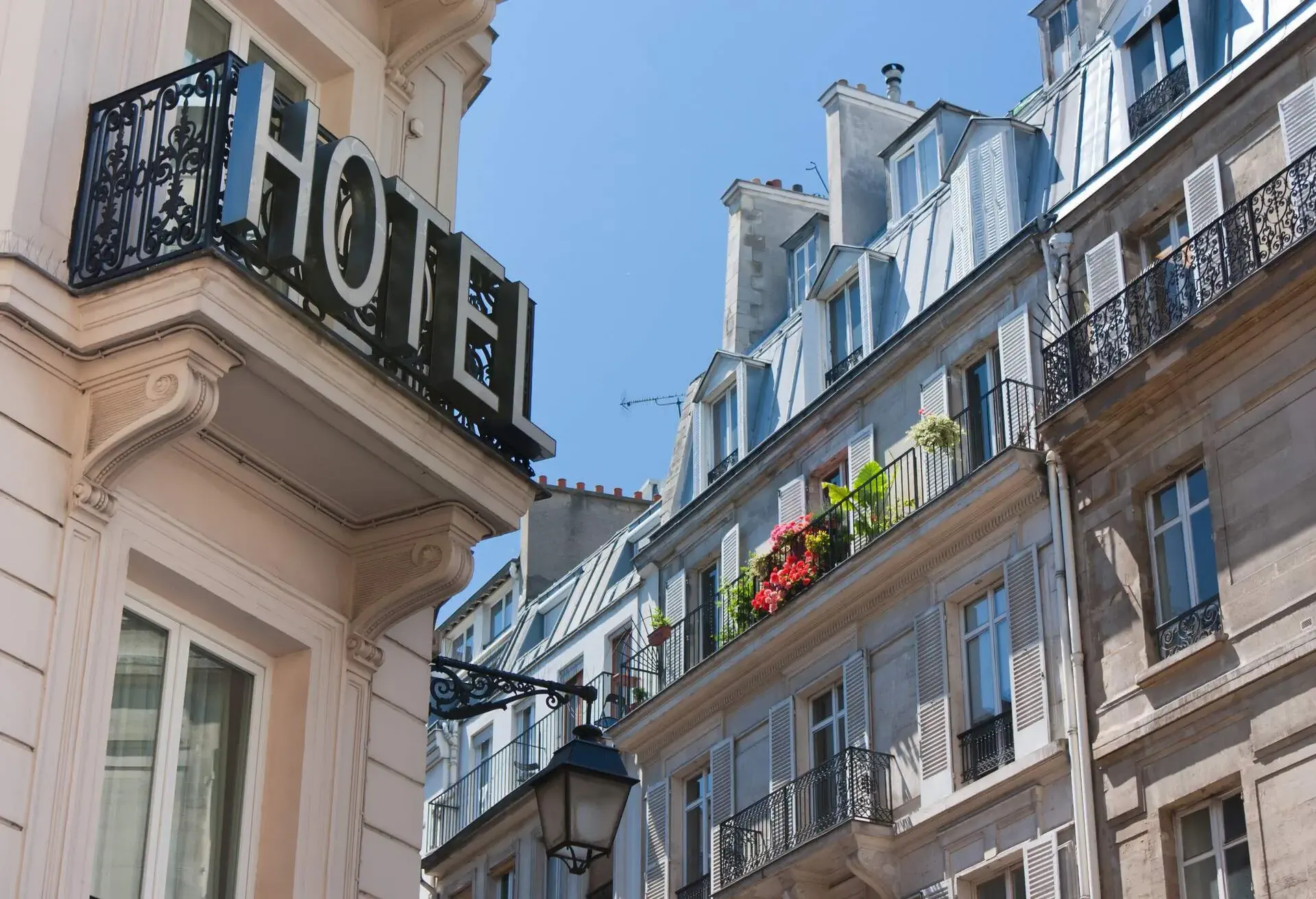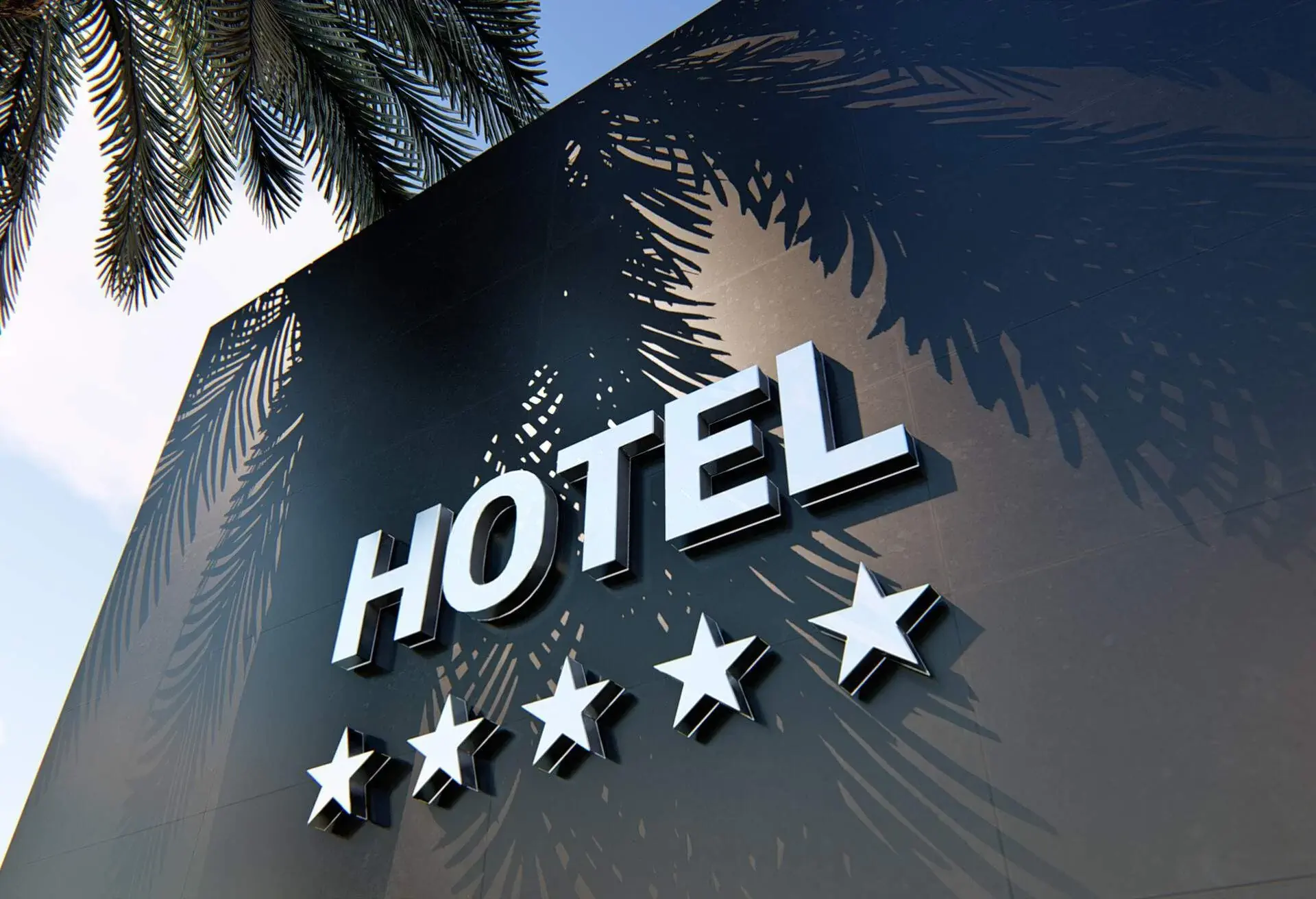When you’re searching for the perfect place to stay on your travels, you may have found yourself wondering: what do hotel stars mean, actually? Hotel stars indicate a hotel’s cleanliness, quality, and level of services and amenities. Whether you’re travelling for business or pleasure, it can be time-consuming to wade through all the options and find the best hotel for your needs — and that’s where hotel stars come in. Here’s everything you need to know about this rating system.
- What do hotel stars mean?
- The most common hotel star rating systems
- No stars vs 1 star vs 2 stars
- 2-star vs 3-star hotels
- 3-star vs 4-star hotel
- 5-star vs 4-star hotel
- Limitations
- Conclusion
- FAQ Section
What do hotel stars mean?
Hotel stars indicate a hotel’s quality. In general, hotels can receive a rating of one to five stars, with a 1-star rating being the lowest quality, or most basic, and a 5-star rating being the highest quality. Star ratings are helpful to set traveller expectations and make people feel more confident that they know what type of hotel they’re booking. If you want to determine what makes a great hotel (or a sub par one), using this rating system can be beneficial.
It’s important to note here, though, that there is no universal rating system — rather, there are various evaluating bodies. Hotel stars are awarded by independent organizations, travel sites, and tourism authorities. Some of these evaluating bodies have their own star ratings (you may see that a certain travel site only awards hotels up to three stars, for example). For this reason, you could see the same hotel rated as a 3-, 4-, or 5-star hotel, depending on the site you’re using.
The most common hotel star rating systems
When it comes to what hotel stars mean, there are a few common hotel star rating systems that travellers should know. These include AAA Diamond Ratings, Forbes Travel Guide, and Michelin Guide (although there are many more). Though they may differ slightly, in general, these rating systems award hotels on a 1- to 5-star basis. Some of the main criteria that are used to award stars include the quality of the property’s facilities, the level of service, and the type of features and amenities that are available to guests.
No stars vs 1 star vs 2 stars

“No star” hotels are hotels that have not received an official star rating. These are sometimes just below 1-star hotels, and sometimes they’re boutique hotels that have opted not to have a star rating because they offer such an individualised experience. Expect the most basic accommodations at a 1-star hotel. That’s not to say that this type of hotel will be unclean or unsafe — it just indicates that a property has no frills in the form of extra amenities or services.
1-star hotels generally have a bed and a bathroom, and that’s about it. Rooms may not have a TV or other amenities. These properties also don’t guarantee daily cleaning or 24-hour reception. Hostels and backpacker motel rooms fall into this category.
2-star hotels are a step up from 1-star hotels in that they likely offer a few amenities, such as daily housekeeping, 24-hour reception, and a room with a phone or TV. Some 2-star hotels provide a continental breakfast. Examples of common 2-star hotels include budget chain motels like Comfort Inn[1] and La Quinta.[2] Both one- and 2-star hotels are the most cost-effective options.
2-star vs 3-star hotels

3-star hotels offer a blend of affordability and upscale comfort. Guest rooms have quality bedding; rooms are spacious and equipped with a desk, closet, flat-screen TV, and coffeemaker. In terms of a 2-star vs 3-star hotel, the main difference is the amenities provided. Whereas 2-star hotels don’t have much in the way of amenities, you can bet that a 3-star hotel will have a fitness centre, business-friendly amenities (such as conference rooms), and likely a pool and on-site dining options.
3-star hotels also tend to be more conveniently located than lesser-star hotels. Often, you’ll find them in urban areas, near major tourist attractions and restaurants. Expect to have 24-hour reception and good customer service. A few examples of 3-star hotels are Holiday Inn,[3] Courtyard by Marriott,[4] and Hampton Inn.[5]
3-star vs 4-star hotel

A 4-star hotel is considered luxury lodging. Guest rooms are noticeably more spacious, with top-quality linens, pillowtop mattresses, bathrobes, slippers, minibars and upscale toiletries, plus equipped kitchens. There are more services offered — concierges, 24-hour room service, and car valet services are commonplace. In terms of on-property amenities, these likely include signature spas, indoor and outdoor pools, sizable fitness centres, and fine dining on-site.
Because you’re meant to be able to get everything you need at a 4-star hotel (from food to activities), these types of hotels are usually located near beaches, major cities, or other tourist destinations. You’ll also likely notice that everything from the decor to the grounds is immaculately maintained. Lobbies are larger, and Wi-Fi is as speedy as it gets.
When it comes to a 3-star vs 4-star hotel, the main difference is that 3-star hotels are more geared toward comfort whereas 4-star hotels aim to provide a luxury experience. You won’t find a signature spa, customized fitness class, or multiple pools at most 3-star hotel — but you will at a 4-star hotel. The other difference is that staff generally provide more personalised service at 4-star properties. A couple of examples of these types of hotels include Westin by Marriott[6] and Omni Hotels and Resorts.[7]
5-star vs 4-star hotel

5-star properties are the most outstanding of the bunch. At these hotels, attention to detail is unparalleled, and the customer service is very personalised. The amenities list is long. Guests can take advantage of a spa with personal trainers, gourmet restaurants, a dedicated concierge, saunas and steam rooms, live entertainment, and more.
5-star properties are also gorgeously decorated and maintained, and often located in architecturally historic buildings. As you might expect, rooms come decked out with designer linens and furnishings. Bedding is supremely comfortable, and in-room amenities will likely include spacious jacuzzi tubs, luxurious robes and slippers, an electric safe, and kitchenettes. The Ritz-Carlton[8] and the Four Seasons[9] are two popular examples of 5-star hotels.
Regarding a 5-star vs 4-star hotel, the biggest difference is that 5-star hotels are really geared specifically toward the wealthiest clientele. You can expect everything to be extravagant, from the on-property amenities to the lobby. Staff are trained to be at the beck and call of all guests, providing extra-personalised services. 4- and 5-star hotels are the most expensive types of hotels.
Limitations
While the star rating system provides a good window into the level of services, amenities, and quality you can expect from a given hotel, there are some limitations to this. Because of the sheer number of companies and travel sites that award stars, it can occasionally be tough to find a universal (or near-universal) opinion on a hotel’s rating. It’s also important to note that these ratings don’t necessarily capture factors like general ambience and individual preference. Because of this, you’ll want to use the other tools at your disposal in addition to the star rating system.
For instance, KAYAK’s hotel pages offer a ton of useful information for travellers looking for the best hotel for their needs. Simply navigate to the property you’re researching, and you’ll be able to read in-depth reviews, view the hotel’s location, and see a comprehensive list of amenities. This is a great way to make your final decision about your lodging.
Conclusion

Finding the perfect hotel can be challenging, considering how many options there are to pick from. Hotel stars are helpful when it comes to setting travellers’ expectations and providing insight into a property’s standards and services. That said, hotel stars should also be viewed as a jumping-off point — in order to make the most informed decision about a hotel as possible, you’ll also want to utilise tools like the KAYAK hotel class filter. You will find it on the top left of the search results page and by selecting the hotel class you want, you will see the available hotels appear. Booking the best hotel just got a whole lot easier.
FAQ section
How many stars can a hotel get?
Generally, hotels are rated up to five stars (though some authorities have rating systems that only go up to three stars). A greater number corresponds to a greater level of luxury. That said, there are official and unofficial star ratings, and any hotel can say that it’s a 3-, 4-, or 5-star property. Officially, the ratings go up to five stars, but unofficially, some hotels call themselves “7-star ” properties to indicate a high level of luxury. At these properties, every last detail is impeccably curated and you can expect personalised services and amenities like a nightly turndown service, a selection of daily newspapers, designer robes and slippers, and poolside service. Officially, these hotels are still considered 5-star hotels, even if people refer to them as 7-star properties.
What does a 7-star hotel mean?

“7-star” hotels aren’t officially a thing in terms of the star rating system, but you may hear this phrase used to describe certain 5-star hotels that are considered over-the-top luxurious. A few examples of the kind of next-level luxury that might earn a hotel “seven stars” (again, this is technically just five stars) include extravagant amenities and services like butlers, private cinemas, your own rooftop terrace, and 5-star dining (just to name a few). Some 7-star hotels could be The AYANA Villas Bali, where guests receive a three-course Floataway Champagne Brunch in the pool, and the Burj Al Arab Jumeirah, which offers guests 17 types of pillows (yes, you read that right!) to choose from.
What are amenities?
Hotel amenities are in-room “extras” and on-property services and common areas. The higher the star rating, the more amenities you can expect to find. These vary by hotel, but you can count on some similarities. For example, 1- and 2-star hotels have very basic in-room amenities, like air conditioning, a TV, and Wi-Fi. At the other end of the spectrum, 4- and 5-star hotels have opulent in-room amenities that include gourmet coffee, high-end luxury toiletries, and a sleeker-than-normal TV with free streaming options. Hotels with higher star ratings also have a range of on-property amenities. These can include valet parking, state-of-the-art fitness centres, indoor/outdoor swimming pools, dining and spas.
Footnotes
1 Source: https://www.choicehotels.com/en-de/comfort-hotels
2 Source: https://www.wyndhamhotels.com/laquinta
3 Source: https://www.ihg.com/holidayinn/hotels/de/de/reservation
4 Source: https://courtyard.marriott.com
5 Source: https://www.hilton.com/en/brands/hampton-by-hilton/
6 Source: https://westin.marriott.com
7 Source: https://www.omnihotels.com
8 Source: https://www.ritzcarlton.com
9 Source: https://www.fourseasons.com




